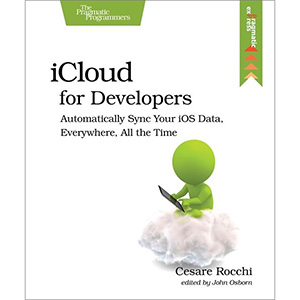iCloud for Developers

Get up-to-date fast on the techniques you need get your applications iCloud-ready. With Apple’s iCloud servers now available to developers, there’s every reason to make synchronization a core feature of your product. You’ll learn how to iCloud-enable the data formats you’re most likely to use in an iOS application: key-value data, document-based data, and relational data. Using a simple grocery list application as an example, you’ll find out how to configure any application to make the most of iCloud’s capabilities.
Your app’s users want their application data to be in sync as they switch from one device to another. Guided by iOS expert Cesare Rocchi, you’ll start by learning how to configure an app and its resources for iCloud. Then, after a quick introduction to iCloud-supported data types, you’ll work on using the simplest: key-value data.
Next, you’ll find out how to get your document-based data (including media files), and even relational data working with iCloud. As you learn each new technique, you’ll use it to synchronize yet another module of the book’s sample app, Grocery, a simple shopping list that can be shared between two or more devices. You’ll learn how to handle the kinds of conflicts likely to occur when you build apps that keep themselves in sync across phones and tablets, as well as how to deal with the notifications used by iCloud to broadcast changes as they occur.
As devices proliferate, synchronization is more important than ever. When you finish this book, you’ll know how to make it a part of your own applications.
What You Need
You should have Xcode 4.6.2 and iOS SDK 6.0 installed on your workstation. To write apps that interact with iCloud, you need to be a registered Apple developer. To test the synchronization of iCloud applications that you write, you’ll need two iOS devices (either of which can be an iPhone, iPod, or iPad).
Table of Contents
Chapter 1. Preparing Your Application for iCloud
Chapter 2. Working with Key-Value Data
Chapter 3. Working with Documents
Chapter 4. Managing Multiple Files and iCloud Notifications
Chapter 5. Wrapping Items in a Single File
Chapter 6. Handling Nontextual Information in a Data Model
Chapter 7. Handling Conflicts
Chapter 8. Working with Core Data and iCloud
Book Details
- Paperback: 136 pages
- Publisher: Pragmatic Bookshelf (July 2013)
- Language: English
- ISBN-10: n/a
- ISBN-13: 978-1937785604














